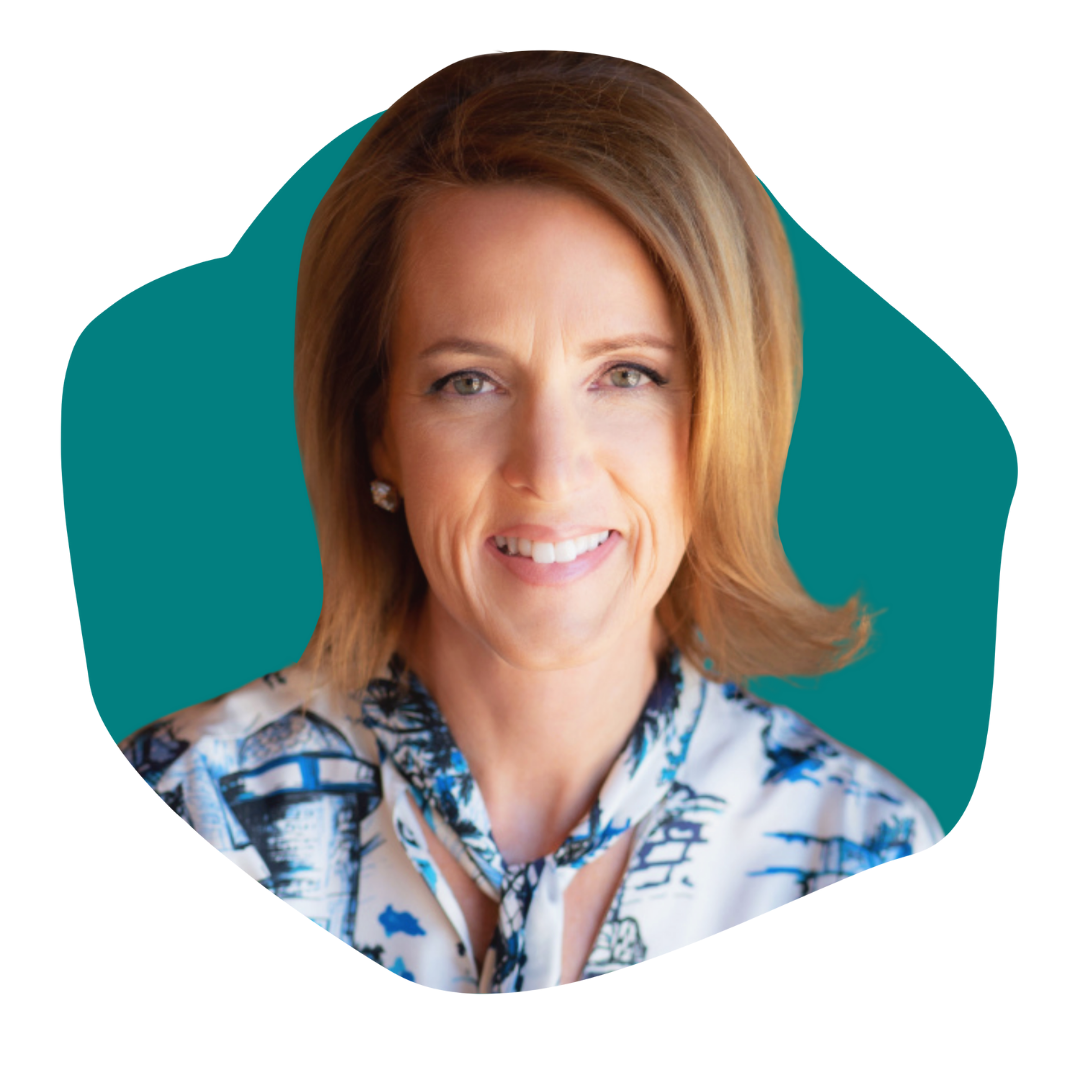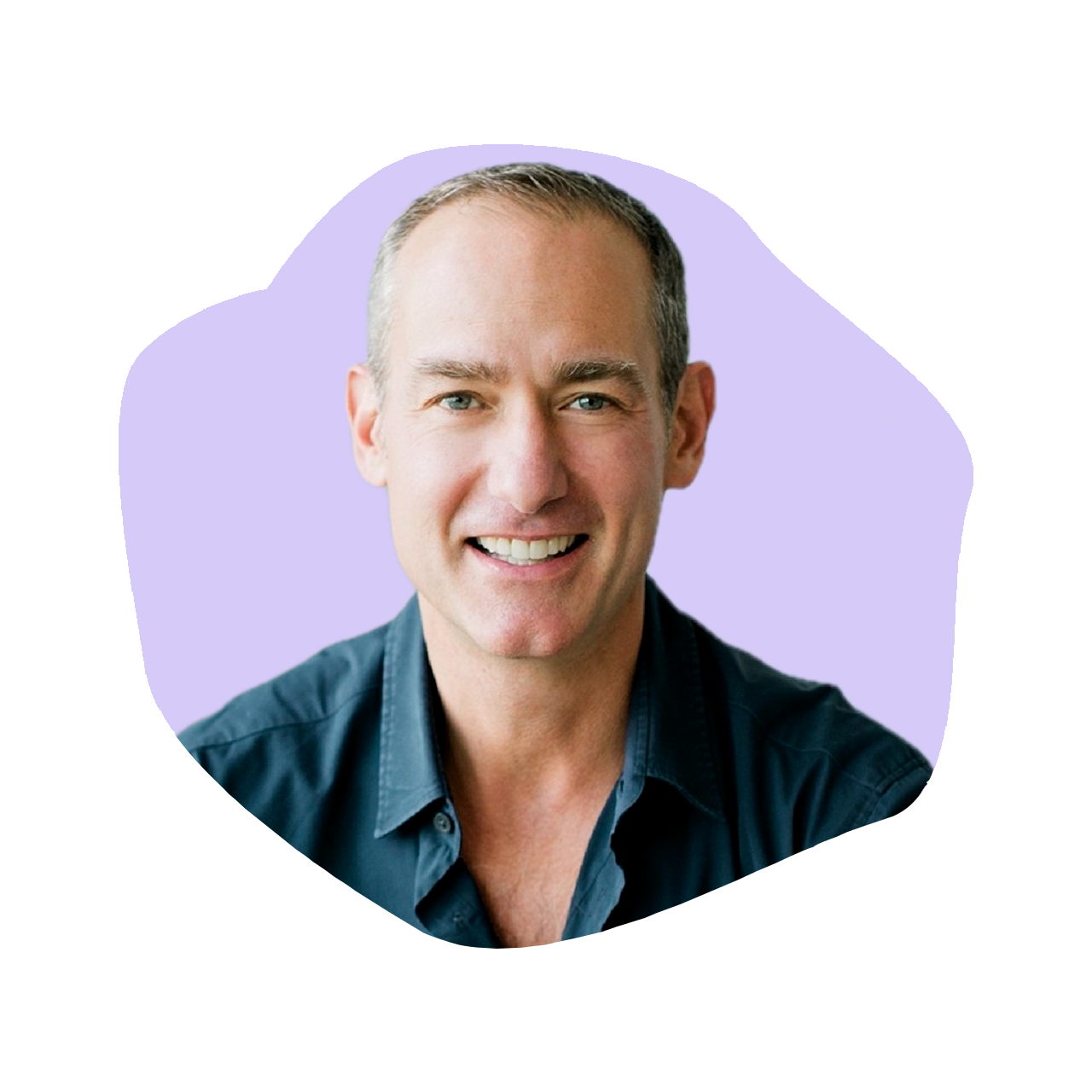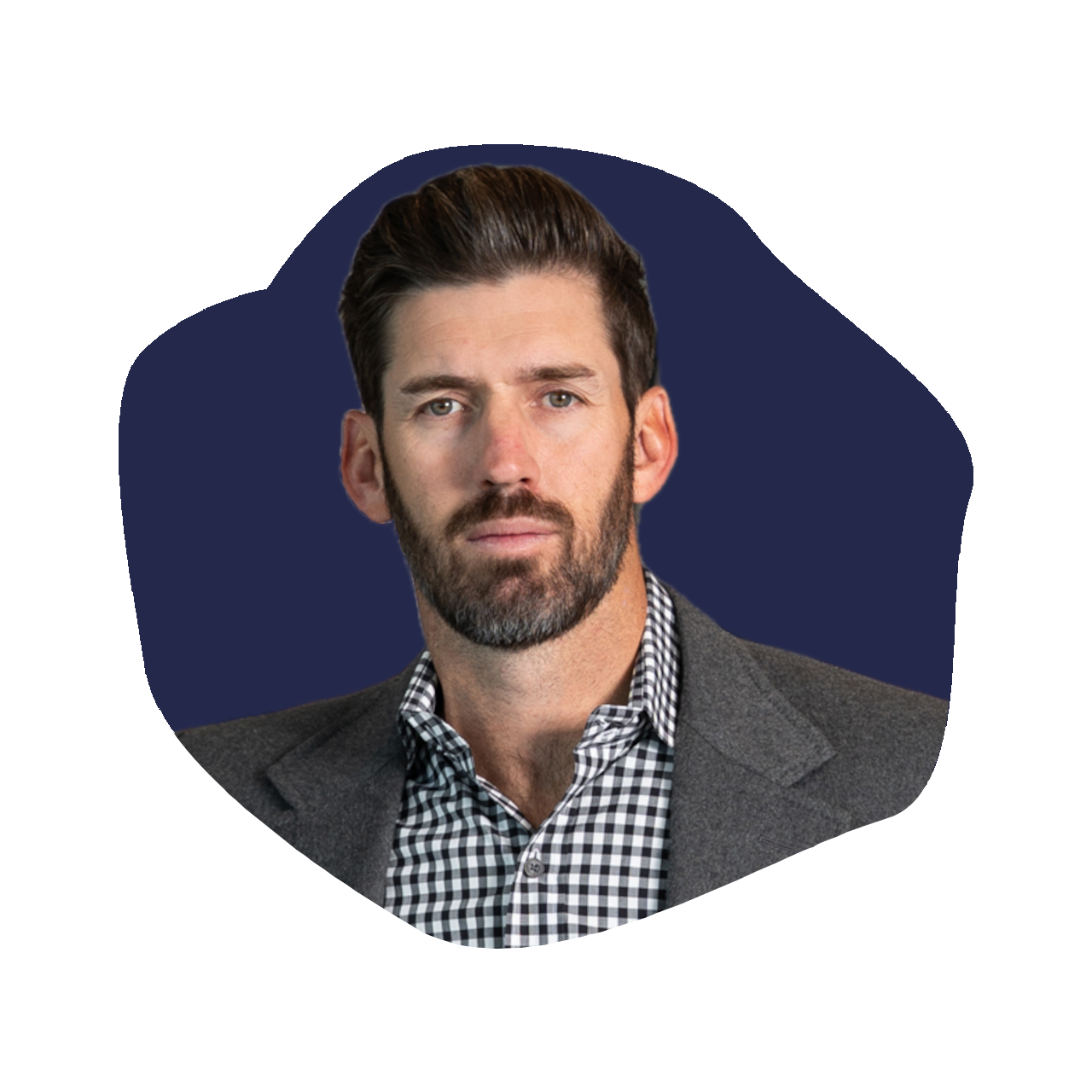Whitney Johnson – Author of Smart Growth & CEO of Disruption Advisors
Episode 226

How do we grow? Listen and learn as we hear from Whitney Johnson, author of Smart Growth and the CEO of Disruption Advisors. Her bestselling book, Smart Growth, is designed to help people turn growth into action and develop their potential. Hear her story on this week’s episode of #TheKaraGoldinShow
Resources from
this episode:
Enjoying this episode of #TheKaraGoldinShow? Let Kara know by clicking on the links below and sending her a quick shout-out on social!
Follow Kara on LinkedIn – Instagram – X – Facebook – TikTok – YouTube – Threads
Have a question for Kara about one of our episodes? Reach out to Kara directly at [email protected]
More links from this episode
Transcript
Kara Goldin 0:00
I am unwilling to give up that I will start over from scratch as many times as it takes to get where I want to be. I want to just make sure you will get knocked down but just make sure you don’t get knocked down knocked out. So your only choice should be go focus on what you can control control control. Hi, everyone and welcome to the Kara Goldin show, though, join me each week for inspiring conversations with some of the world’s greatest leaders. We’ll talk with founders, entrepreneurs, CEOs, and really some of the most interesting people of our time. Can’t wait to get started. Let’s go. Let’s go. Hi, everyone. It’s Kara Goldin from the Kara Goldin show. And I’m so excited to have Whitney Johnson on Whitney is the author of an amazing book that I have right here called smart growth, and also the CEO of disruption advisors. We will hear more on this episode about the book and really about Whitney’s journey, which is so incredible. She is a member of the incredible group, thinker’s 5020 20, top voice on LinkedIn as well. And she is the host of the popular disrupt yourself podcast as well. And if that isn’t enough, she is also the co founder of the disruptive innovation fund with the late Clayton Christensen. So I want to hear more about that as well. And like I said, we will be discussing her brand new book, which is so so good. It’s already a Wall Street Journal and USA Today bestseller called Smart Growth, how to grow your people to grow your company. So welcome, Whitney.
Whitney Johnson 1:55
Thank you, Kara. And I have to say I am the proud drinker of hint water. I love your water. So shoe.
Kara Goldin 2:03
It’s so so yummy. And especially when you’re doing interviews and you’re broke, it’s a little dry. It’s definitely it’s nice to have one here. So so first of all, the book congrats really, really excited. Whitney and I have known each other for a while. So I feel like it’s an opportunity to talk to an old friend. So I’m I’m really, really thrilled to have her here. So let’s talk about your incredible journey. First talk to me a bit about like the highlights in your career. Where did you come from what, you know, how, how did we get Whitney today?
Whitney Johnson 2:42
Right? All right. So I I actually started as a music major. I graduated in music from college and had gotten married and made my way to New York, with my husband, who was getting his PhD in at Columbia and microbiology. And we needed food on the table. And so I was the designated go put food on the table person started as a secretary working for a stock broker and discovered this whole world of Wall Street because I had grown up in California, I didn’t know what Wall Street was. And I saw all these young men across, sitting across from me in this bullpen trying to open up stock accounts. And as I watched them, and they were saying things like throw down your pom poms and get in the game. And I was offended because I was a cheerleader in high school. I needed to throw down my pom poms. And so I started taking business courses at night accounting, finance economics, and had a boss who believed in me, which allowed me to move from being a secretary to a banker would not have known to call it this then but that was the beginning of me disrupting myself and I’ll talk about that in just a minute. I then moved from investment banking to equity research. I was an institutional investor ranked analyst for eight years. So I was picking stocks. And while I was doing that, I discovered two things. Number one is that I liked thinking about the momentum of people more than I did of stocks. I also discovered disruptive innovation Clayton Christensen, his work, it helped me understand what was going on in the emerging markets as I was picking stocks of oh, this is what’s going on wireless is disrupting wireline, very interesting explanatory mechanism. And then realized, Oh, if I really want to get to where I want to get to in my career, maybe I need to disrupt myself. And so that was another big aha. So I had more interested in people than stocks disruption applies to people not just products. And so eventually left Wall Street co founded the disruptive innovation fund with Clayton did that for about five years. And then in 2012, I had this decision that I really wanted to chase down these ideas and so I sold I stake and started to focus on building out this intellectual property around personal disruption and the S curve of learning, which I can talk about in just a minute. But really focusing on growing people to grow your company. And so now I have a tech enabled talent development company where we help people figure out where they are in their growth. And then we wrap coaching and consulting around it. So that I started as a music major, and now I run my own business. That’s an
Kara Goldin 5:27
incredible. So before we jump into the highlights of the book I want to hear so you touched on you ended up selling your share, but you were doing the disruptive innovation fun. So I’m with the late Clayton Christensen. So what did you learn from from? What was it first of all?
Whitney Johnson 5:49
Yeah, so what had happened is I had when I when I left Wall Street as an equity analyst I had I knew Clayton’s work. I was working with him on a number of volunteer projects. And he wanted to start this fine, because people were saying to him, What do you put on a trade of going long Netflix and short blockbuster, and it was working. And so he thought, maybe I should start a fund investing in disruption. And so he wanted to do this, he had a son, who Matt, who now runs the fund, he was just graduating from business school, but neither of them had worked on Wall Street. And so he asked me to join them as a co founder, it was interesting in the sense of it, we had a barbell approach. On the one hand, we were invested in publicly traded securities, like Netflix like Salesforce, like Intuitive Surgical, but we also had a venture arm as well, where we were investing in things like Coupang. So unusual in that it was a hybrid of both venture and publicly traded securities. So that’s what we did. And, and like I said, Today, his son is the Managing Member and continues to run the fund.
Kara Goldin 6:53
So interesting. Wow. It’s such a great experience. I think it’s so fun when I talk to people about their journey. Because, again, you started out I started out as an executive assistant as well. And you just kind of grew, I mean, you’re nobody would have ever sort of predicted that you would have been doing, you know, equity analysts, you are definitely co founder of the fund. I mean, all of those things, like are just incredible. And then where you are today, not only starting your own business, but also author of books and your I know, you’ve also run incredible conferences, to where you bring just great thoughts. And I remember, the one that I spoke at, I walked away just really like holding on to my head, because it just had, I felt like so many ideas. I mean, you You really know how to get people thinking and growing more than anything. So I really love that about you. So that’s what we need more of, we need more witness in the world. So thank you.
Whitney Johnson 8:03
Well, I have to I have to just toss the ball back to you for a nanosecond because one thing that I loved and you told the story when you came on my podcast was the story when you went to New York and how you applied for a job. And you just showed up and said, hey, the CEO told me to come call him and and you did. And I just admire that Moxie. So much. And so just a mutual admiration society.
Kara Goldin 8:29
Thank you. Well, that’s really, really nice. So, okay, so the book so so good. I’m not kidding. It’s definitely something that whether you are trying to grow yourself or trying to grow your team, I think I kept thinking, does this apply just to larger teams? No. smaller teams? I mean, it really is, is, you know, kind of a playbook. How I thought about it. So really, really great. So you suggest that 2022 will be a year of tremendous growth in the workplace, and that everyone is talking about the great resignation would be better called the great aspiration. Talk to me a little bit about your thinking there.
Whitney Johnson 9:18
Yeah. So psychologists have found that periods of, of trauma and severe stress are like a pandemic, are often followed by tremendous growth, and they call it post traumatic growth. And so when I look at what has happened over the past couple of years is we’ve all been through this very harrowing experience. And in the process of dealing with a pandemic, we have discovered that we’re more resilient than we thought. We’ve developed all sorts of capabilities that we never thought we would develop. And so as we’re coming out of the pandemic, this notion that after going through this difficult experience, people are giving up They’re resigning they’re quitting doesn’t make sense to me, yes, they are quitting their jobs. But that’s not the motivation. It’s not we’re giving up. There’s some of that. But I would say in general, it’s people saying, I have seen that I’m capable of more than I thought I was, I have seen that I want a different life, for myself, for the people I love. They’re aspiring to more. And so if, as business leaders, we could reframe this and say, people are aspiring to more, and I’m going to help them achieve what they want to achieve to achieve their potential. By reframing this as the great aspiration, you would have the tools and the mindset that you need in order to retain your people
Kara Goldin 10:49
really powerful, right. And I think that the problem is, instead people are just trying to save their people. Right? It’s not really about money, either. I think for people, I was just talking to somebody the other day who was thinking about resigning, not because he’s unhappy, but because he feels like he could be doing more. And at which I thought was really interesting. And he was trying to figure out how he could suggest like a flex time where he could, you know, on the up and up, really talk about some other stuff that he’s really thinking about an exploring. So I think more and more people are just trying to find great people. So I think that the world will also be shifting in the direction of maybe two years ago, they wouldn’t have even looked at doing sort of different types of work. But I think today people are definitely trying to keep workers and and great workers and find great workers. So really like the it’s in the, in the future employees hands more than anything.
Whitney Johnson 12:02
Yeah. And, and it’s exciting to think this worker that you’re talking about that he’s he’s actually a great illustration of what we just described, he’s not quitting, he’s saying, I want more. So let me figure out how I’m going to structure that.
Kara Goldin 12:16
When you’re hiring someone new, you don’t want to spend hours sifting through applications trying to find the right fit. To quickly and easily find your perfect candidate use this episode sponsor LinkedIn jobs. When you use LinkedIn jobs, you can create a free job post in minutes, your entire network sees the post along with LinkedIn entire professional network of over 770 million people. As applications roll in, you can use the simple tools on LinkedIn jobs to quickly filter and prioritize when you want to interview and then eventually hire. You can focus on candidates with the right skills and experience while using screening questions to get your role in front of only the most qualified. That’s why small businesses rate LinkedIn jobs. Number one, and delivering quality hires versus leading competitors. LinkedIn jobs helps you find the candidates you want to talk to faster. Did you know every week nearly 40 million job seekers visit LinkedIn, post your job for free at linkedin.com/kara Goldin, that’s linkedin.com/kara Goldin to post your job for free Terms and Conditions apply. Okay, so I totally believe that so many are rethinking this right now and figuring out what what they think they need to grow. I think like, that’s the thing that so many are still trying to kind of understand about themself. But what is the first step? What What would you say? I mean, you talk a lot about this in smart growth when, you know, you’re really trying to audit your own life and and excavating your shadow values. Can you talk a little bit more about this?
Whitney Johnson 14:05
Yeah, absolutely. So, so very simply, what I put forward in the book, let me just back up quickly, for people who might not be familiar with the S curve is the S curve of learning? Well, the S curve itself was developed by Rogers. He’s a sociologist, and lots of people familiar with product, know it very well. My insight was that you could use this to help us understand how we learn and how we grow. And so whenever you start something new, like you start a business, you start a new role, you start a new job, you’re at the launch point of that s and growth is initially it’s happening, but it feels slow, because everything is new, and you’re making lots of predictions and they’re wrong, and so your dopamine drops. And so it feels like an absolute slog, and you think, why did I decide to do this? But you also then no, this is what the launch point is, like. I’m tracing the emotional arc of growth. It’s going to feel slow. So then you move into the sweet spot. And the experience that people are having is, oh, I’m starting to figure it out. I’m feeling this sense of it’s hard, but not too hard. It’s easy, but not too easy. You feel exhilarated, all of your neurons are firing. And so you have this experience of growth is fast, and it feels fast. So this is a c part of the s. And then you get to mastery where you’ve figured everything out, you know exactly what you’re doing. But you’re no longer learning, you’re no longer getting dopamine, and so you’re bored. And so that plateau can quickly become a process. So you’ve got the launch point, the sweet spot, and the mastery. And that growth cycle, once you understand what it is you understand, slow, and then fast and slow, is how you grow. It’s very simple, very visual, and therefore useful. You can increase your capacity to grow, because you know the experience that you’re having throughout your growth. Now, to answer your question, launch point, when you’re there, you’ve got to make this decision. I’m on this new S curve, maybe I chose to be here, maybe I’m stranded on this new S curve, I get to decide, do I want to stay here or not? And so in trying to make that decision, you ask yourself questions like, do I believe that I can be successful here? And if I don’t believe it yet, do I believe that I can believe that I can be successful. You ask yourself questions like, Is this in sync with my identity? Is this in sync with my purpose, etc? And if all those questions are yes, then you probably will stay longer and start to collect data and ask yourself, can I be successful here? Now, to your question about Chateau values, one of the things you’ve got to figure out is, you might say to yourself, I absolutely want to be on this curve. But you’ve got to now figure out, what are you doing to help yourself move along that curve? And what are you doing to hinder yourself? So for example, I want to be a manager, I want to manage people. That’s something that a lot of people want to do. How do you know what your shadow values are, is if you say, I want to be a manager, and you look at your day, and you have 10 things that you want to get done today. And all 10 of those things on your list are all about tasks, and not a single one of them is about the people on your team, you’ve probably got a shadow value, the shadow value is telling you Well, yeah, I see people are important. But in fact, I have this value that says if I’m not doing things, I’m not productive. And if I’m not productive, I’m not valuable. So I’m just going to prioritize tasks. Now, that may be okay, if you want to be an individual contributor. But if you actually want to be a manager, you’ve got to excavate and look at the gap between what you’re saying is important and what you’re actually doing. And then you start to course correct of saying, Alright, I’ve been very effective. But if I want to be a manager, maybe on my task list, I need to have at least one or two things, that’s people related, start to close that gap, that gives me the, the momentum that will allow me to move into the sweet spot of the being the manager that I want to be
Kara Goldin 18:05
interesting. So people spot surname, an example like, how do you shift that when you’re looking at your list? And you’ve got, and you’ve got tasks? Nope, yep. Oh, what is an example?
Whitney Johnson 18:17
Yeah, so one of the things that I will do, by the way, task oriented person standing, you know, raising her hand right now, is I will say, I will do a couple things. Number one is that when someone interrupts me, when I’m busy doing my tasks, I will add the fact that I spent 15 minutes talking to that person and put it on my list and add that I just did it. So that I can get the dopamine hit of doing something that I have said is important and valuable. And I’m giving my credit myself credit for doing it. Another thing that you you can do, and I do is I say to myself, alright, I’m going to make sure that today, I have at least one conversation with a person on my team, and ask them how they’re doing. Do you feel like you’re making progress in your role that you want to make and just do a check in with them on it on a human basis, human basis, as opposed to a robot basis, how to check in with them, of what they’re doing, what they’re thinking how they’re doing. So that I’ve added into my tasks, that human interaction of checking in with my people so that I start to close that gap.
Kara Goldin 19:21
Wow, that’s, that’s amazing. And I think to some extent, people might even be doing more around people than they give themselves credit for. Oh, right.
Whitney Johnson 19:30
I’d like that. Yes, I think you’re right.
Kara Goldin 19:33
I think that that’s that that is something to kind of look at how much you value the people and kind of the group that you’re creating now can What about if other people in your organization are not on the same page as you are in terms of you talked about getting you to that manager level? They don’t believe that you can and what is your advice there?
Whitney Johnson 19:59
Yeah, so The way I think about this Kara is that when you want to do something new in your organization, whether it’s promotion, or you want to move to a new role into another department, when you’re making that call of I want to jump to a new S curve, I want to disrupt myself and do something new. By definition, you are asking your current boss and potentially your future boss to also disrupt themselves to also jump to a new S curve. And they’re saying, I don’t want to jump to a new S curve. I like the one I’m on with the people that I have. Why would I let you go do something else? Why would I take someone new on on my team? And so if you can think of it that way of what jobs are they trying to get done? And how do I pack a parachute for them so that when they jump off this S curve by hiring me, or letting me go, it will feel safer to them? Things like, here’s why. It’s not just helpful for my career, but here’s why it will be useful for you and your career, and your team. And here’s what I’ll do to help you find a replacement. And here’s why strategically, this will be good for the business for me moving around. So remember that when you want to do something new, you are asking the person across the table from you to also do something new. So how can you pack a parachute? So it feels safer for them to do that?
Kara Goldin 21:24
I love that you have my my brain spinning now as you’re talking about this. So it’s such such great advice and thoughts for sure. Not only for, you know, myself or kind of connecting the dots along the way, that of my own journey and things that I’ve done things that I haven’t done, for sure, yes. You know, it’s fun to look back on that and thinking just overall about what I know about leadership. So in your book, like I said, is just absolutely incredible. So we’re going to switch gears a little bit, one of the things that I love to talk about is it on the show is is your journey, I only have incredible guests that I know, have great stories or, you know, allow themselves to be vulnerable about, you know, hey, it wasn’t always I wasn’t, life wasn’t always perfect along the way. So you’ve had an amazing career. And you know, not only can you look at your own career, but also you have an amazing experience in working with so many companies along the way. Can you share a story somewhere in your career, where you faced a huge challenge, and you weren’t sure that you were going to be able to get back up again? Or get out of the situation? What did you learn from that experience?
Whitney Johnson 22:51
Yeah, so so the the, the thought that comes to mind is that after I left Wall Street, so I had now been an institutional investor ranked analysts for eight years, and I was very good at stock picking and probably a little bit full of myself and had become an entrepreneur. And I, I like investing in people. I like investing in their dreams. And I had a friend who I thought had a very good idea. She wanted to start a magazine, it was around organization, this is back in 2008, where we still did magazines. And it was a good idea. And at one point, the circulation got to 100,000 It was very good. But here’s the here’s the problem, I was so excited about it, and so impetuous in many ways of just wanting to move off the launch point of that S curve as fast as I possibly can. And sometimes we can be impetuous, you need to stay at the launch point, explore collect the data, make sure it makes sense that I made some very critical errors. Number one is that I even though we were putting in most of the money, we were backing this idea of this entrepreneur, I gave her control. So I put in most of the money, she kept control. And I sort of steamrolled my husband into getting involved even though he did not want to. So what are the lessons that I learned? One is we lost a lot of money that really, really hampered us financially for a number of years. The second thing that I learned is that my husband, he is my most important truth teller, he loves me, He will support me. And when he disagrees with me, I need to listen. It doesn’t mean I won’t, I’ll do exactly what he says. But it means I need to consider it and not just, I’m going to do what I want to do. And so those were very important. And then the third thing I learned is that when you have a business deal, you have a contract you’ve done at the outset, and you’re very, very careful about Putting in guardrails, because you don’t know you think when you first start, everything will be wonderful and exciting. But sadder and wiser grow later. It wasn’t wonderful. And it wasn’t exciting. And it so happened that this entrepreneurs partner was a lawyer. So that was a problem too, because they could just keep papering thing and there was nothing that we could do. So I learned the importance of staying on the launchpoint longer collecting your data on making sure that when your true tellers talk, you listen and you consider it. And number three, when you go into a business transaction, no matter how well meaning everybody is the outset, it is very important that you must do the tough work of having the conversation of what this is going to look like, and then put it on paper. And so that so that all parties are protected.
Kara Goldin 25:48
Yeah, no, that’s I couldn’t agree more. I also have counseled many entrepreneurs to that sometimes when you’re putting your company together, having actually a whole different firm, a whole different attorney, look at this from you as an individual perspective, and what risk is there, because so often you’re doing things like setting up an LLC, or whatever for the company. But they’re not really looking at sort of the situation and the risk, you know, things do go bad, or something happens along the way. And I would say that, I’d say probably 90 Over 90% of entrepreneurs that I talked to never have even thought about having, you know, a separate attorney really looking out for you. It seems obvious, but that isn’t I
Whitney Johnson 26:46
know, right? You’re in the throes. And it’s so exciting. And so here, here’s the lesson applied, is that in my current business disruption advisors, I have a business partner. We worked together probably for three to four years, just as sort of on a contractor basis, testing, making sure we can work together. And once we were ready to become partners, we spent a year and a half on the contract, because it allowed us it wasn’t it was amicable, but it allowed us to do that back and forth and have those conversations, and really be thoughtful about what that agreement would look like. Because as you know, well, partly because you’re married to your business partner, but it’s easier to get a marital divorce than it is a partnership divorce. Yeah, so it’s important to do that work up front. And now we’ve got a great partnership, but we did the work upfront.
Kara Goldin 27:40
I love that. That is no. So such important lessons there. So great. So where do people find out more about you? And and I know you do a lot of writing for Harvard Business Review. And I’ve seen many others out there as well. But and then obviously the book, Amazon, on your website, etc.
Whitney Johnson 28:05
Yeah. So what I would say, Kara, that’d be really fun to put in the show notes. The article on Harvard Business Review that came out this month. Yes, it’s got a little feature with with you in it, too. And so another place is I have the disrupt yourself podcast, which you have been on twice. And also you can order Smart Growth anywhere books are sold, whether it’s on Amazon, or your local bookstore.
Kara Goldin 28:31
I love it. That’s terrific. And thanks, everybody for listening to this episode, please subscribe to the Kara Goldin show. And definitely, so you can not miss out on amazing guests like Whitney and you can hear so many stories lessons. I mean, this has just been a an incredible episode for sure Whitney. So thank you so much for coming on. And definitely everybody give five stars those help a lot in the algorithms at for sure. And find me on all social platforms as well at Kara Goldin with an AI and don’t forget to pick up a copy of my book on daunted if you haven’t had a chance to read it. It’s also on Audible. And we are here every Monday and Wednesday. So thanks, everyone for listening and have a great week and good bye for now. Before we sign off, I want to talk to you about fear. People like to talk about fearless leaders. But achieving big goals isn’t about fearlessness. Successful leaders recognize their fears and decide to deal with them head on in order to move forward. This is where my new book undaunted comes in. This book is designed for anyone who wants to succeed in the face of fear, overcome doubts and live a little undaunted. Order your copy today at undaunted, the book doc Come and learn how to look your doubts and doubters in the eye and achieve your dreams. For a limited time, you’ll also receive a free case of hint water. Do you have a question for me or want to nominate an innovator to spotlight? Send me a tweet at Kara Goldin and let me know. And if you liked what you heard, please leave me a review on Apple podcasts. You can also follow along with me on Facebook, Instagram, Twitter and LinkedIn at Kara Goldin. Thanks for listening
People Also Liked

752
Mark Rampolla: Author of An Entrepreneur’s Guide to Freedom and Founder of ZICO

751
Deborah Pagani: Founder of Deborah Pagani Beauty

750
Angela Caglia: Founder & CEO of Angela Caglia Skincare

749
Doss Cunningham: Chairman & CEO of Nutrabolt

748
Cheree Ashley: Founder & CEO of Osier




